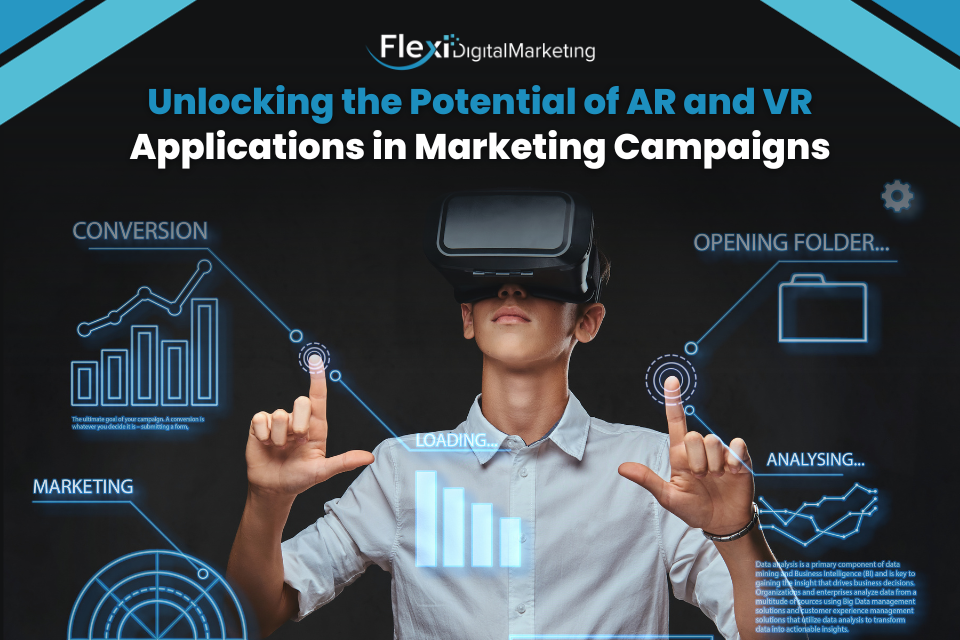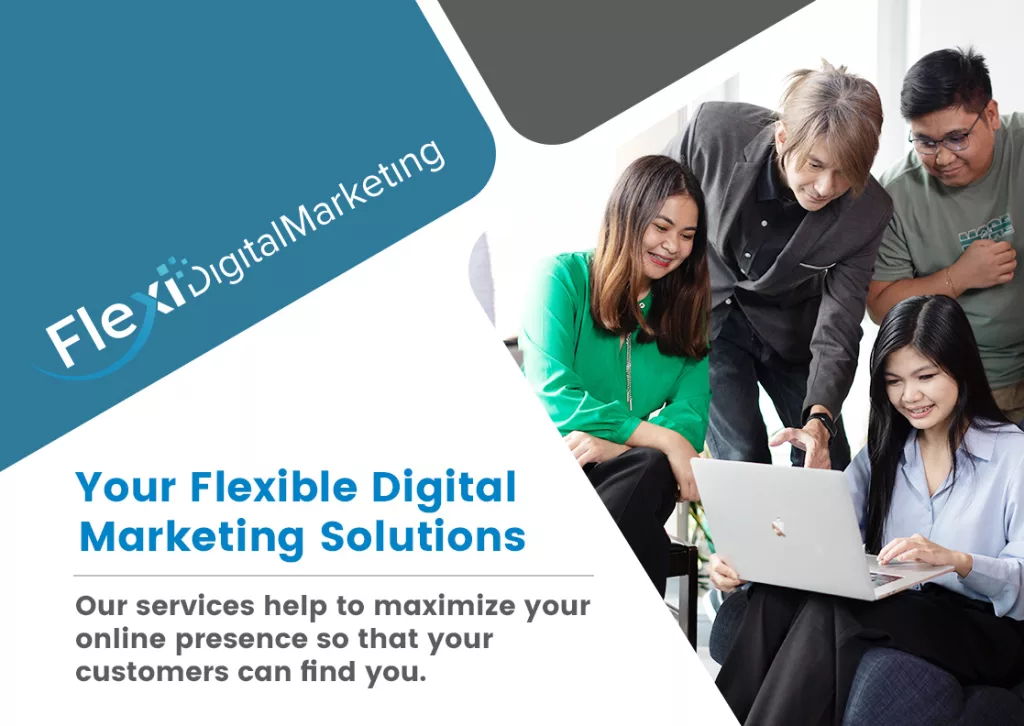In today's rapidly evolving digital landscape, marketing professionals and business owners are constantly seeking innovative ways to capture the attention of their target audience. Augmented Reality (AR) and Virtual Reality (VR) have emerged as game-changing technologies that offer unique opportunities to engage, captivate, and immerse consumers like never before.
This article explores the exciting world of AR and VR in marketing, shedding light on the differences, benefits, real-world examples, and strategies for implementation. We will also delve into the challenges and considerations of harnessing these immersive technologies, ultimately providing a comprehensive guide to unlocking their potential in your marketing campaigns.
What is AR and VR?
Before diving into AR and VR's intricacies in marketing, let's establish a fundamental understanding of these technologies.
Augmented Reality (AR) is a technology that superimposes digital information or virtual elements into the real world. It enhances the user's perception of reality by blending the physical environment with computer-generated sensory input. AR is typically experienced through smartphones, tablets, smart glasses, or headsets, offering users a more interactive and personalised experience.
On the other hand, Virtual Reality (VR) is a fully immersive experience where users are transported to a computer-generated, three-dimensional environment. This environment can be entirely fictional or a replication of a real-world location. VR is primarily experienced through headsets and is known for its ability to provide complete immersion and sensory engagement.
Advantages and Disadvantages of Using AR and VR in Marketing
AR and VR have become powerful marketing tools, offering unique advantages that set brands apart and create memorable consumer experiences. It has given many businesses a unique opportunity to engage customers on a new level. But like any other technology, AR and VR are not fool proof.
Likewise, here are some advantages and disadvantages of using AR and VR in Marketing campaigns.
Benefits of Using AR and VR in Marketing
1. Enhanced User Engagement
One of the most compelling advantages of using AR and VR in marketing is their unparalleled user engagement. These technologies transport consumers into interactive, immersive experiences beyond traditional advertising. When users are engaged in a memorable AR or VR experience, they are more likely to interact with the content, share it with others, and remember the brand behind it.
2. Improved Product Visualisation
AR and VR allow consumers to visualise products in a previously unimaginable way. AR, for example, superimposes digital elements onto the real world, enabling customers to see how a piece of furniture might fit into their living room or how a pair of shoes would look on their feet. This enhances their understanding of the product and increases their likelihood of purchasing. In fact, in 2020, 32% of consumers incorporated AR into their shopping experience.
3. Personalisation Opportunities
In the age of personalisation, AR and VR in Marketing provide unparalleled opportunities for tailoring marketing content to individual preferences. Brands can use these technologies to create highly personalised user experiences catering to their needs, interests, and desires. This level of personalisation leads to higher user engagement and conversion rates.
4. Novelty and Buzz
Incorporating AR and VR into marketing campaigns generates a sense of novelty and excitement. Consumers are naturally drawn to these technologies, and brands that embrace them stand out in a crowded marketplace. The mere mention of AR or VR in digital marketing can create a buzz, attracting attention and curiosity.
5. Data Analytics and Insights
AR and VR in Marketing offer a treasure trove of data and insights that can be invaluable to marketers. These technologies can track user behaviour and interactions within the virtual environment, providing data that can be used to refine marketing strategies. Marketers can better understand user preferences, informing content creation and customization.
6. Accessibility
Accessibility is a significant advantage of AR in marketing, as it can be experienced through widely available devices like smartphones and tablets. VR is also becoming more accessible as technology advances and becomes more affordable. This means a broader audience can engage with AR and VR content, breaking geographical and demographic barriers.
7. Storytelling Possibilities
AR and VR in Marketing empower brands to tell immersive stories. They enable users to enter the brand's narrative, creating emotional connections and fostering brand loyalty. These technologies offer a creative canvas where marketers can craft compelling and unforgettable brand stories.
8. Improved Training and Education
VR, in particular, is invaluable for training and educational content. It immerses users in realistic scenarios and environments, making training programs more effective. From medical simulations to technical training, VR enhances comprehension and retention.
9. Reducing Return Rates
AR and VR in Marketing can significantly reduce product return rates. By allowing customers to experience products virtually before purchase, they are more likely to make informed decisions. This not only saves costs for businesses but also increases customer satisfaction and trust.
10. Global Reach
AR and VR in Marketing transcend geographical boundaries, enabling brands to reach a global audience. These technologies provide the means to connect with potential customers worldwide, making them ideal for international marketing campaigns and expanding market reach.
Disadvantages of Using AR and VR in Marketing
1. High Development Costs
One of the primary disadvantages of using AR and VR in marketing is the high development costs. Creating compelling and immersive AR or VR experiences requires specialised expertise, software, and often custom content development. This can strain marketing budgets, particularly for smaller businesses, making the initial investment a barrier to entry.
2. Limited Audience
While the AR and VR marketing audience is growing, it remains limited compared to traditional marketing channels. Not all consumers have AR or VR-ready devices, whether a compatible smartphone or a high-quality VR headset. This limitation restricts the potential audience for AR and VR campaigns and may not be cost-effective for reaching a broader demographic.
3. Technical Challenges
AR and VR experiences can be technically challenging, leading to potential disadvantages for marketing campaigns. Users may encounter lag, connectivity problems, or software glitches, resulting in a frustrating experience. This can lead to negative perceptions of the brand associated with the technical issues.
4. Privacy Concerns
Collecting user data for personalisation in AR and VR experiences can raise privacy concerns. Consumers may be wary of sharing personal information, even for a more personalised marketing campaign. Marketers must be transparent about data collection and usage, comply with data protection regulations, and address user privacy concerns.
5. Learning Curve
AR and VR interfaces can be unfamiliar to many users, creating a learning curve. Users may need time to adapt to the virtual environment's controls, navigation, and interaction methods. This learning curve can lead to user frustration and a potential decline in user engagement.
6. Content Quality
The success of AR and VR marketing campaigns hinges on the quality of the content. Poorly executed AR or VR experiences can harm a brand's image and reputation. Users expect immersive, engaging, and bug-free experiences. Brands must invest in high-quality content creation, which can be time-consuming and costly.
Implementing AR and VR in Your Marketing Strategy
Now that we've seen the potential of AR and VR in action, it's time to explore how you can integrate these technologies into your marketing strategy effectively.
Define Your Objectives
Before diving into AR and VR, defining your marketing objectives is crucial. Ask yourself, “What do you hope to achieve with these immersive technologies?” Are you looking to boost sales, increase brand awareness, or enhance customer engagement?
The answers to these questions will help you shape your AR and VR strategy, whether it's boosting sales, increasing brand awareness, or enhancing customer engagement.
Choose the Right Technology
Choosing the right technology is an important decision when implementing AR and VR in your marketing strategy. Consider whether AR or VR is the best fit for your goals. AR is excellent for product visualisation and enhancing the physical world, while VR excels in creating immersive storytelling experiences.
User Experience Is Key
The success of your AR and VR campaigns largely depends on the user experience. The more intuitive, enjoyable, and user-friendly the AR or VR experience, the more impact it will have.
Likewise, always prioritise user experience in your campaigns. Pay attention to easy navigation, clear instructions, and seamless interaction. The more intuitive and enjoyable the AR or VR experience, the better it will perform.
Content Quality Matters
High-quality content is paramount for AR and VR campaigns. Users expect immersive experiences that meet or exceed their expectations. Invest in top-notch content creation to ensure your drive delivers an engaging and memorable experience.
Quality content can set your brand apart from competitors. The success of your campaign hinges on the quality of the AR or VR experience.
Promote Accessibility
While AR is accessible through widely available devices like smartphones and tablets, VR has historically required specialised headsets. However, accessibility to VR is improving, with more affordable options becoming available.
Likewise, strive to make your AR or VR campaign accessible to as many users as possible. Ensure that your AR and VR campaigns are as accessible as possible. Consider providing instructions or resources for users to obtain the necessary hardware if feasible.
Data Collection and Analytics
One of the significant advantages of AR and VR is their ability to collect valuable data about user behaviour and interactions. Thus, analyse user preferences and engagement patterns to tailor future content and campaigns more effectively.
Then, leverage the data collected from AR and VR experiences to refine your marketing strategy and create more personalised content.
Marketing Integration
For a successful AR and VR strategy, integration with your broader marketing efforts is essential. Ensure a consistent brand message and identity across all channels. Your AR and VR campaigns should complement and reinforce the brand narrative, creating a seamless customer experience.
User Support
Providing user support is often an overlooked but critical aspect of implementing AR and VR in marketing. Users may encounter technical issues or have questions about navigating the immersive experience. Offering adequate user support, whether through tutorials, FAQs, or customer service, helps users navigate your AR and VR content more effectively, leading to higher satisfaction.
Conclusion and Key Takeaways
In summary, successfully integrating AR and VR into marketing campaigns requires a deep understanding of your audience's needs, clearly articulating your objectives and a commitment to providing a top-notch user experience. The future of marketing is immersive, and those who embrace it will be better positioned to capture the attention and loyalty of their target audience.
As technology advances, the opportunities for AR and VR in marketing will only grow. The potential is immense, and those who dare to explore it will unlock new horizons in brand engagement and consumer satisfaction.
So, venture into the AR and VR marketing world and let your brand's story come to life in ways you never thought possible. And if you are ready to take your marketing campaigns to the next level with AR and VR, contact Flexi Digital Marketing!


